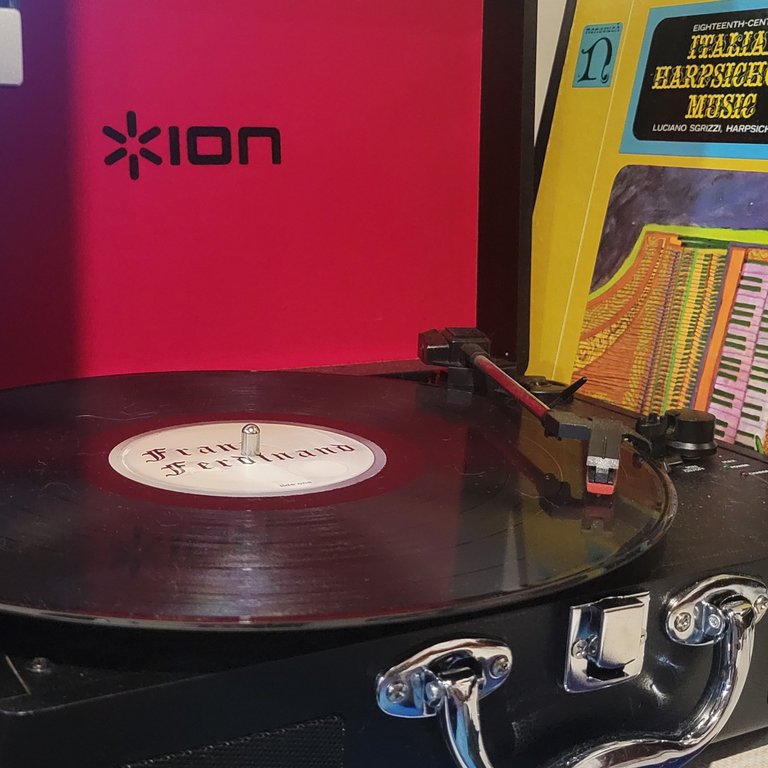From Shellac to Vinyl: The Transition from 78rpm to LP Records
Over the course of the last few weeks I've traced the history of recorded music from tinfoil, to wax cylinders, to shellac disks that typically spun at 78rpm. The name '78rpm' stems from the record's rotation speed – 78 revolutions per minute, a pace that defined an era of audio playback.

However, the 78rpm records were not without their limitations. Each side of a 10-inch record could hold only about three to four minutes of sound, which meant that longer pieces of music had to be split across several records. 12-inch records, which could hold up to five minutes of sound, were not uncommon, but were used primarily for "elite" recordings. Nonetheless, the "one song per side" discs both interrupted the listening experience but also limited the practicality of the format.
Durability was another issue. Shellac, the brittle material most 78s were pressed from, was prone to shattering and could suffer from wear after repeated plays, which degraded sound quality over time. There is little sadder than accidentally dropping a shellac record from only 12 inches and hearing the telltale "crack" of damage. Moreover, the wider grooves and the material itself limited the dynamic range and fidelity of the recordings.
Yet, within these grooves lay the heartbeat of an era. The 78rpm records were the bearers of the first jazz recordings, the initial broadcasts of blues, and the early voices of opera stars, echoing through time. They served as a cultural chronicle, capturing the sounds and sentiments of generations. Caruso recorded on shellac, and 78rpm records saw the first recordings of jazz, marches orchestrated by Sousa, and the first ever recordings from the Queen of Blues, Bessie Smith.
In the shadow of the limitations of the technology, inventors and engineers were already at work, dreaming of a medium that could carry more music, with greater fidelity, on a single, durable disc. Their efforts would soon lead to a breakthrough that would revolutionize the record industry and music consumption forever.
One of the first and most critical of these innovations was the material shift from shellac to vinyl. Vinyl was more flexible, durable, and less prone to breakage, which already marked a significant improvement in the physical quality of records. But the benefits of vinyl extended beyond its resilience; it also produced a clearer, more refined sound, allowing listeners to enjoy their favorite music with less surface noise and greater sonic clarity.
Parallel to material changes were developments in the recording process itself. The introduction of the microgroove was a game-changer. These finer grooves, first introduced by Dr. Peter Goldmark of Columbia Records, allowed for a much tighter winding of the spiral on the record, which significantly increased the amount of playable audio without compromising the size of the disc.
Further enhancing the new format's capabilities was the evolution of the record player. The stylus, or needle, used in playing the microgroove records was much smaller and more precise, reducing the wear on records and preserving the sound quality over many more plays. Record players themselves became more sophisticated, with better motors, more stable turntables, and enhanced amplification systems, all contributing to a richer audio experience.
These technological innovations were not simply about packing more music into a smaller space; they were about dreaming bigger. They allowed for the concept of an album—an extended play record that could tell a story, take listeners on an auditory journey, or showcase an artist's range in ways previously unimaginable.
As these technologies converged, the stage was set for the introduction of a format that would become synonymous with music itself—the Long Play (LP) vinyl record. This next chapter in audio history would not only allow for longer playtime but also mark the beginning of a new era in music consumption that prioritized not just single tracks, but cohesive collections of work.
(c) All images and photographs, unless otherwise specified, are created and owned by me.
(c) Victor Wiebe
Blind Skeleton
Online Radio! 24x7 of OTR classics:
The Skeleton Brew coffee shop is open!

Innovation over time makes for interesting reading the old LPs where exceptionally easy to damage or chip if banged.
More modern vinyl has and still is hugely favoured over most other materials used, many prefer the comforting sound of movement through the grooves.
!BEER
I love modern vinyl, and am slowly building a collection again. I had a sizeable collection when I still live in Canada, but it didn't make the trek out east with me. That makes me sad, but alas. It's fun these days to scout flea markets and yard sales to find a gem or two.
Plenty of people selling off LP's in vinyl now the next generation is starting to enjoy listening to them again.
View or trade
BEER.Hey @wwwiebe, here is a little bit of
BEERfrom @joanstewart for you. Enjoy it!Learn how to earn FREE BEER each day by staking your
BEER.Thank you!